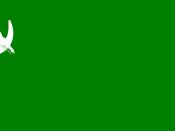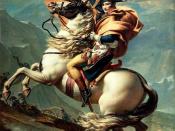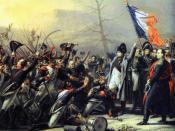Animal Farm is a satire on the Russian Revolution, and is one of the best 20th-century examples of allegory, an extended form of metaphor in which objects and persons symbolize figures that exist outside the text. As its title suggests, the setting for this fable-like novel is a farm, and the bulk of the characters are the farm animals themselves, all of whom symbolize various revolutionary figures or political ideologies.
The opening chapter introduces the theme of revolution that dominates Animal Farm, as well as introduces the farm animals who are less notable for their individual characters than for the political figures they will symbolize in later chapters. Old Major is the central figure in Chapter One. He lights the spark of revolution on the farm, and symbolizes the idealistic revolutionary leaders whose ideas served as the catalyst for revolution in Russia and more general within the Communist movement.
His statement that "the life of an animal is misery and slavery" echoes the 17th-century philosopher Hobbes, who famously described human life as "nasty, brutish, and short".
The first chapter contains many examples of the whimsy which is scattered throughout Animal Farm, most notably in the way Orwell describes the various farm animals in semi-human terms. We meet Clover, the mare "who never quite got her figure back after her fourth foal," an example of Orwell drawing attention to the very "animalness" of the farm animals by juxtaposing it with traditionally human characteristics and foibles. Orwell's writing style here, as throughout the novel, is plain, spare, and simple, a technique which emphasizes the fable aspect of Animal Farm; by using minimalist language and short, simple sentence structure, Orwell draws the reader's attention to the animals' perspective, a point of view which will lead to great irony as the...



Nice job
This analysis is in-depth and has some good ideas
3 out of 3 people found this comment useful.